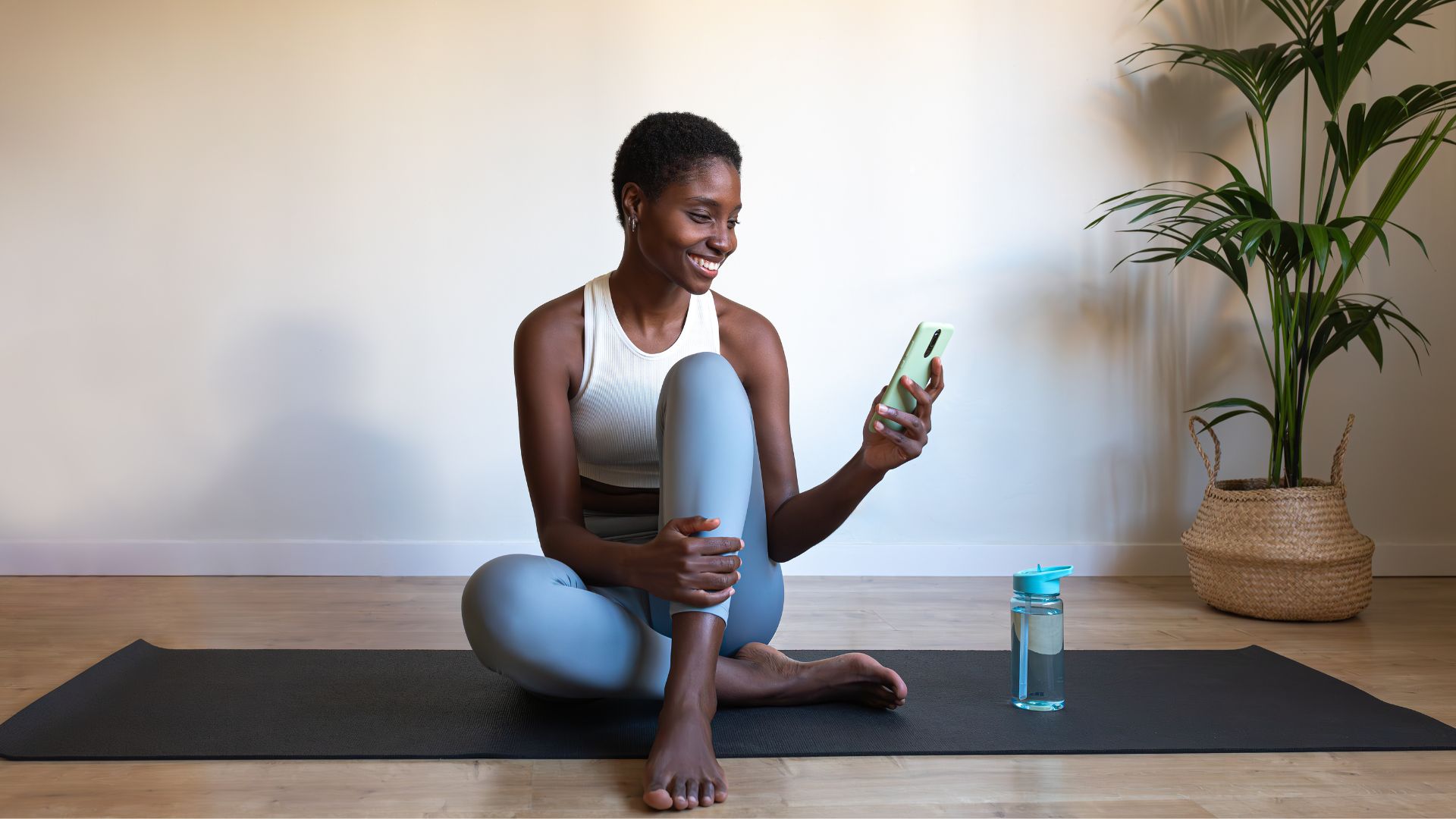The fire hydrant exercise is the answer to stronger hips and glutes without lifting weights - here's how to do it
The fire hydrant exercise is so simple but so overlooked. To wake up my sleepy glutes, I started doing the exercise - and noticed a big difference


The fire hydrant is a much underrated move, in my humble opinion. It’s largely overlooked in favour of bridges, squats and lunges - and while these are all excellent exercises in their own right, this move has its own unique benefits.
I've only learnt about these benefits recently, after researching the best glute exercises and mobility exercises for my hips. Before then, aside from doing the fire hydrant exercise in a few Pilates and barre classes, I wasn't too familiar with it.
Now I know, it's the perfect glute activation and strengthening exercise for me, and the experts love it too. “The fire hydrant will not only strengthen your glutes, but it’s also brilliant for hip stability, core control and balance,” explains personal trainer Edwina Jenner. “It looks simple, but when you focus on doing this move correctly, it can really burn.”
What is the fire hydrant exercise?
A fire hydrant is a classic bodyweight move that targets the glutes, hips and core, says Jenner. “It gets its name from the dog-like posture (yes, really) which may not be the most dignified, but this is a powerful little move that can give big results if done correctly.”
Performed on all fours, the exercise counterbalances the hours of sitting that many of us do on the daily. In particular, it targets the gluteus medius, which is the muscle that runs down the side of the hip in the glutes. This muscle gets ‘switched off’ when we spend too much time sitting, resulting in what’s been colloquially called ‘dead butt syndrome’.
Amusing moniker aside, studies show that the fire hydrant exercise can have serious benefits, with poor glute strength manifesting in issues such as lower back pain, poor posture, and knee discomfort.
As always, it’s important to nail your form and technique before you begin. Personal trainer Emma McCaffrey shows us how it’s done below.
Sign up to our free daily email for the latest royal and entertainment news, interesting opinion, expert advice on styling and beauty trends, and no-nonsense guides to the health and wellness questions you want answered.
How to do the fire hydrant exercise
- Start on all fours with hands under and knees under hips.
- Brace your core and keep your spine neutral.
- Slowly lift one leg out to the side, knee bent to 90 degrees.
- Lift to hip height if you can, then lower slowly with control.
- Aim for 12-15 reps per side, without rushing.
Expert tip: "Your hips shouldn’t roll or twist, this is a small but controlled movement," says McCaffrey. "You should also feel it in your glutes, not in your lower back."
How to do the fire hydrant exercise with a band
Popping a resistance band around the thighs for the fire hydrant will really up the ante, as well as forcing you to maintain good posture - a vital part of reaping the greatest reward from the move.
Here's how to do it:
- Get into the all fours position again on your yoga mat.
- Loop a mini band just above your knees.
- Complete the exercise as normal.
- Make sure you’re not leaning into the supporting leg - stay centred and strong through your core, says Jenner. "Move slowly and with control to gain the full benefits."
How to do a standing fire hydrant
Keen to work your balance as well as strength as part of a bodyweight workout? We hear you. The standing fire hydrant is the perfect stability challenge, as you’ll need to maintain balance while in motion.
Here's how to do it:
- Stand leaning slightly forward, place your hands on your hips or hold onto a chair or wall for balance, says Jenner.
- Shift your weight onto one foot, slightly bend the standing knee, and lift the opposite leg out to the side, opening up your hip.
- Keep your core engaged and avoid leaning or twisting
What is the fire hydrant exercise good for?
1. Targeting under-worked muscles
Although the glutes are the body’s largest muscle, many exercises recruit and activate the major butt muscle, the gluteus maximus, and somewhat overlook its smaller (but no less important) neighbours, the gluteus medius and the gluteus minimus.
Not so, the fire hydrant. “The fire hydrant targets smaller glute muscles that don’t always get as much attention,” says Jenner.
2. Improving hip mobility
Hip mobility is something I’ve noticed diminishing as I’ve aged, with pregnancies and births adding to the strain.
Gaining mobility in a joint isn’t just about moving it more. We need to engage a joint through all its planes of motion, namely: sagittal (side to side), frontal (forward and backwards) and transverse (rotation).
“Life and sport don’t just happen in straight lines. We twist, pivot, and rotate all the time,” explains Lucie Cowan, master cycle trainer at Third Space. "Rotational movements help train the body to move efficiently and safely in these directions. They build strength in the transverse plane (the plane of rotation), which is often neglected in traditional training programs focused on forward-backward or up-down movement."
This makes the fire hydrant a true functional fitness exercise, training us for real-life as well as enhancing our performance in the gym.
3. Boosting stability
Another vital component of functional fitness is stability. In order to maintain good form while moving through the exercise, you will need to engage your core muscles, and avoid twisting the hips. This helps to build stability and control through the whole body, particularly the lumbar (lower) back.
The fire hydrant exercise might not look it, but it's one of the better core exercises to help with this at home.
"It’s important to keep your weight evenly distributed through both arms and your back flat without twisting your hips,” says Rowan Clift, training and nutrition specialist at AI-based fitness and lifestyle coaching app Freeletics. “To do this, you’ll need to brace your core to prevent leaning.”
4. Helping reduce injury risk
Another benefit of core strength and stability? You’ll reduce your risk of injury, not only when training, but in everyday life as well.
"Fire hydrants help correct posture and prevent injury, especially in the knees and lower back,” shares Clift. “They’re a simple yet effective way to challenge and strengthen the lower body, improve stability and activate the core.”
5. Simplicity and accessibility
Some glute strengtheners, like the good morning exercise, require weights to activate the burn. Fire hydrants are adequate on their own. They can be easily done anywhere, whether you’re travelling for work, on holiday or at home, much like the clamshell exercise.
You should also be able to give them a go, no matter what your fitness level currently is, making them one of the most accessible moves around.
“With society spending so much of our time sitting, the fire hydrant is a powerful and effective move to keep your glutes strong, no matter where you’re starting from,” notes Jenner.
It’s worth noting here that your range of motion may well be fairly small to begin with - and that’s OK. The key here is form and focus over all else - you’ll soon notice your range of motion improves as you gain strength and mobility.
Are fire hydrants better than squats?
Fire hydrants and squats are different exercises, targeting different parts of the body. If you're looking to build general lower-body muscle and strength, then any squat will be your best friend. If you're looking for specific glute exercises to improve your hip mobility or build muscle in the glutes, fire hydrants are a must-try exercise.
Squats are also a full-body exercise, whereas fire hydrants are not. They target the back muscles, engage your core, and challenge ankle mobility.
How many fire hydrants should I do a day?
Generally, two to three sets of 10 to 15 repetitions will be enough for most people to reap the benefits of the fire hydrant exercise.
However, how long you should lift weights for or how many fire hydrants you should do depends on your specific fitness goals and your overall exercise routine. Doing other glute and quadricep exercises alongside this movement will also help boost hip mobility and lower-body strength.
Anna Bartter is a freelance health and fitness writer who writes across a range of publications, including woman&home, Marie Claire, Stylist, Psychologies and more. She's never happier than when trying out a new wellbeing trend, and when she's not writing, she's most likely to be found at a reformer Pilates class.
You must confirm your public display name before commenting
Please logout and then login again, you will then be prompted to enter your display name.

